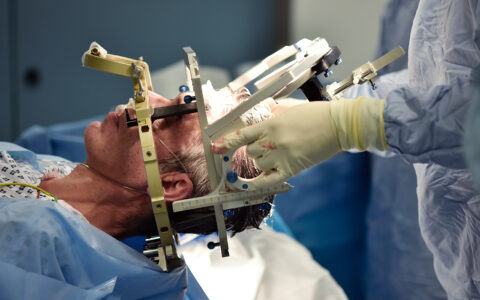Researchers at Vanderbilt University Medical Center (VUMC) have examined relationships between certain brain dysfunctions and mortality outcomes in critically ill patients, concluding that close attention to coma is especially warranted.
The recent study published in Schizophrenia Research was conducted by Jo Ellen Wilson, M.D., Ph.D., M.P.H., an associate professor of psychiatry at VUMC, and Vanderbilt colleagues, including first author Morgan T. Sexton, M.D.
Examining Brain Dysfunction in Critical Illness
“Our work has shown that catatonia not only occurs in the setting of critical illness, which was somewhat of a novel idea when we first started researching it, but that it co-occurs with delirium,” said Wilson, a researcher with the Critical Illness Brain Dysfunction and Survivorship Center at VUMC. Over years of research, her group has identified relationships between coma, catatonia and delirium in the setting of critical illness.
In the current study, the team evaluated whether there were associations between brain dysfunction and mortality risk in a cohort of 378 patients with critical illness.
“In the first analysis of its kind, we looked at whether critical illness, catatonia, delirium and coma were associated with in-hospital next day mortality and up to one-year later,” Wilson said.
“We looked at whether critical illness, catatonia, delirium and coma were associated with in-hospital next day mortality and up to one-year later.”
In this cohort, catatonia and delirium were not found to be associated with in-hospital death or mortality up to one year. However, coma was associated with both in-hospital mortality (hazard ratio [HR], 2.30 [95% CI, 1.19-4.44]; P =0.014) and mortality at up to one year (HR, 1.68 [95% CI, 1.09-2.59]; P =0.02).
While this study did not show associations between catatonia or delirium and mortality, previous studies have found delirium may be tied to both in-hospital and one-year mortality.
Wilson emphasized that this study involved a relatively small population and also contained a fairly high proportion of patients experiencing trauma, which is linked to unique features that make it difficult to compare to prior studies of older medically complex patients.
Different subtypes of delirium and catatonia may also lead to different outcomes, she explained, and delirium may be associated with mortality risk on a different time scale.
“What I think is quite novel, though, is looking at coma’s effect on mortality,” Wilson said, noting few studies have examined this relationship.
The researchers found links between coma and increased in-hospital mortality, as well as later deaths, at up to one year.
However, the duration of the patient’s coma was not associated with increased mortality.
The emergence of coma as an apparently strong predictor of mortality, while other types of brain dysfunction were not, highlights the need for better understanding of the spectrum of brain dysfunction and all its impacts, Wilson said.
“A surprise for us is how much mystery there still is, in terms of our understanding of these forms of brain dysfunction, their relationship to one another, and their risk for different forms of morbidity.”
Prioritizing Coma Patients
Critically ill patients with low levels of activity may not always appear to require attention, but their condition should raise concern, Wilson indicated.
“A patient who is possibly in coma is someone that we should be very worried about,” she said.
“Coma is a red flag for mortality on the next day, and even up to a year. If there are things we can do to maybe improve someone’s level of consciousness to get them out of coma, we should try to do so.”
A screening for brain dysfunction can alert physicians to conditions that may not be easily detectible.
“Something that I would like clinicians to be aware of is that you can’t study what you don’t know,” she said.
“We need to mitigate risk factors that are contributing to the presence of brain dysfunction, modify this as much as we can, and then support these patients and their families when they survive their ICU experience, to improve their quality of life as much as possible.”
Upcoming Research
“There’s still a lot of work that needs to happen in this space, particularly around understanding catatonia and coma’s impact on relevant outcomes,” Wilson said.
She and her colleagues are now exploring whether catatonia is associated with accelerated forms of dementia, in addition to whether it is a risk factor for increased depression or post-traumatic stress disorder after the ICU setting.
Additionally, they are also looking at risk factors for developing catatonia in the ICU, with current research under review for publication.




